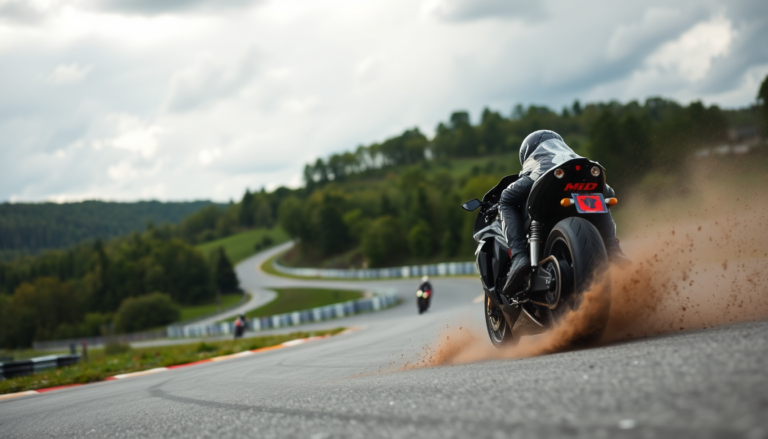Argomenti trattati
The recent MotoAmerica event at Virginia International Raceway (VIR) was nothing short of a rollercoaster ride for riders and teams. Returning to this iconic venue for the first time since 2022, competitors faced a series of hurdles, including unpredictable weather, mechanical glitches, and racing incidents that really put their resilience to the test. Yet, amid these challenges, some standout performances emerged, setting the stage for what’s to come in the upcoming rounds. Are you ready to dive into the highlights?
Market Overview: Analysis of Team Performances
The weekend kicked off with a buzz of excitement as riders geared up to tackle the unique challenges of VIR’s technical layout. In the Superbike category, Benjamin Smith showcased his talent despite a rocky qualifying session marred by rain. Starting from tenth on the grid, he demonstrated promise but unfortunately encountered setbacks in the races, including crashes and mechanical issues. However, his optimism heading into Mid-Ohio reflects a common theme among athletes: resilience is key. Will he bounce back?
On a different note, Bobby Davies made waves in the Stock 1000 class, delivering an impressive performance at VIR. Adapting quickly to the circuit, he notched his first points of the season with a commendable thirteenth place finish in Race 1 and improved to ninth in Race 2. His journey is a testament to the importance of adaptability and learning in the quest for racing success. How crucial is it to learn from each race?
Insights into Key Zones and Competitive Dynamics
Diving deeper into the dynamics of the event reveals some compelling insights. The OrangeCat Racing duo, Andrew Lee and Jayson Uribe, truly stood out, each securing podium finishes. Their ability to navigate the challenging conditions while maintaining competitive times under pressure highlights their skill and preparation. Lee’s position as the championship points leader underscores the significance of consistency and performance throughout the season. Is consistency the secret ingredient to winning?
Meanwhile, the Karns Performance TST Industries Racing Team faced their own hurdles, particularly with Levi Badie, who showed championship-caliber pace but unfortunately crashed while leading in Race 1. Despite this setback, Badie and his teammates returned stronger in Race 2, showcasing the resilience that’s vital in competitive racing. Their experience emphasizes the necessity of perseverance and strategic adjustments when the going gets tough. How often do teams need to adapt to survive?
Trends in Performance and Investment Opportunities
The trends we observed at VIR suggest that while mechanical reliability and strategic planning are crucial, the ability to adapt to changing conditions can ultimately define success. Teams like Robem Engineering, with Alessandro Di Mario clinching his second consecutive MotoAmerica Twins Cup title, illustrate how strong team dynamics and consistent performance can pay off big time. Di Mario’s impressive winning streak reflects the importance of technical excellence and collaboration between rider and team. What does it take to build such a winning team?
As we look ahead to the next round at Mid-Ohio, the data coming out of the VIR event will likely shape team strategies and investments. Understanding the competitive landscape and leveraging the lessons learned will be essential for teams aiming to elevate their standings in the championship. Are they ready to seize the opportunities?
Practical Advice for Teams Looking Ahead
For teams and riders gearing up for upcoming events, several strategies can enhance performance. Prioritizing mechanical reliability and conducting thorough checks before races can help prevent technical issues that might hinder competitiveness. Additionally, fostering open communication between riders and support teams ensures that feedback is quickly integrated into race strategies. Could this be the key to unlocking their potential?
Moreover, embracing a mindset of continuous learning and adaptation is vital. As demonstrated by Bobby Davies and the Karns Performance team, taking lessons from each race—whether they’re positive or negative—can pave the way for future successes. Establishing a robust training regimen that includes simulations of race conditions can also prepare riders for the unique challenges of various tracks. How can they train effectively for every twist and turn?
As the MotoAmerica series progresses, teams will need to harness these insights to maximize their potential and capitalize on the opportunities that lie ahead. The next round at Mid-Ohio promises to be another thrilling chapter in the ongoing saga of the MotoAmerica championship. Are you ready for the action?

